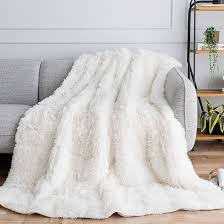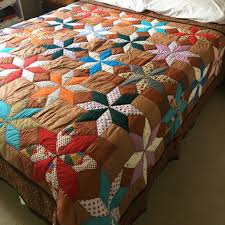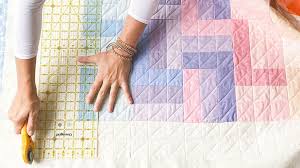
A quilt is a type of bedding made of two layers of fabric stitched together with a layer of insulation in between. Quilts are traditionally used as bed coverings, but they can also be hung on walls or used as throws. Quilting is an art form that dates back centuries, and the designs and patterns of quilts often reflect the culture and history of the people who made them.
Quilts are typically composed of three layers: the top layer, known as the quilt top; the middle layer, known as the batting or wadding; and the bottom layer, known as the backing. The quilt top is usually composed of patchwork pieces that have been sewn together to create a design. The batting or wadding provides insulation and warmth, while the backing can be made from any type of fabric.
Quilting is an art form that has been practiced for centuries all over the world. Different cultures have developed their own unique techniques for creating quilts, from hand-piecing to machine-quilting. Quilt makers often draw inspiration from traditional designs or incorporate their own personal flair into their creations.
Quilting can be done by hand or by machine. Hand-quilting involves stitching through all three layers of fabric with a needle and thread to create a patterned design. Machine-quilting uses a sewing machine to stitch through all three layers at once in order to create intricate patterns quickly and easily.
Quilts are often made as gifts for special occasions such as weddings, birthdays, anniversaries, or graduations. They can also be used to commemorate important events such as births or deaths in a family. Quilts can also be hung on walls or draped over furniture for decoration purposes.
No matter how it’s made or used, a quilt is always a special item that will last for generations to come. It’s an art form that celebrates history and culture while providing comfort and warmth to those who use it.
Seven tips for quilting.
- Choose fabrics that are similar in weight and texture to ensure even quilting.
- Use a rotary cutter, ruler, and mat for precise cutting of fabric pieces.
- Pre-wash all fabric to avoid shrinkage after the quilt is finished.
- Press seams open when piecing blocks together for more accurate results.
- Use a walking foot on your sewing machine when piecing blocks together to prevent shifting of fabric layers while sewing them together.
- Take time to plan out your quilt before starting; this will save time in the long run!
- Have fun! Quilting should be an enjoyable experience so don’t be afraid to experiment with different fabrics and designs!
Choose fabrics that are similar in weight and texture to ensure even quilting.
Quilting is an art form that requires precision, skill and a good eye for detail. To ensure that your quilts look even and professional, it is important to choose fabrics that are similar in weight and texture. This ensures the quilt will remain balanced and look uniform when finished.
Lightweight fabrics such as cotton muslin, batiste or voile should be used for the top layer of the quilt, while heavier fabrics such as flannel or wool should be used for the backing. Using fabrics with different weights can cause the quilt to become unbalanced, resulting in an uneven quilting pattern.
It is also important to consider the texture of the fabric when choosing materials for a quilt. Fabrics with a smooth texture should be used on top of rougher textures to ensure even stitching. For example, if you are using a flannel backing, use a cotton muslin or voile on top for even stitching.
Using fabrics that are similar in weight and texture will help create a balanced and even quilting pattern that looks professional and beautiful when finished. With careful selection of materials and attention to detail, you can create stunning works of art with your quilts!
Use a rotary cutter, ruler, and mat for precise cutting of fabric pieces.
When it comes to quilting, precision is key. To ensure that your quilt pieces are cut accurately, it is important to use the right tools. A rotary cutter, ruler, and mat are essential for achieving precise cuts when working with fabric.
The rotary cutter is a versatile tool that can be used to quickly and cleanly cut through multiple layers of fabric. It features a razor-sharp blade that makes it easy to make straight and curved cuts with ease. The ruler provides a straight edge for accurate measurements while the cutting mat serves as a safe cutting surface.
When using these tools together, it is important to remember that they should be used on a flat surface. This will ensure that the cuts are even and accurate. Additionally, it is important to keep the blade of the rotary cutter sharp so that it can easily glide through the fabric without snagging or pulling.
Using a rotary cutter, ruler, and mat is an effective way to achieve precise cuts when quilting. With these tools, you can create beautiful quilts with perfectly sized pieces.
Pre-wash all fabric to avoid shrinkage after the quilt is finished.
Making a quilt is a labor of love, and the last thing you want is for it to shrink after you’ve put in all that hard work. To avoid this, it’s important to pre-wash all fabric before you begin your quilt. This will help ensure that your quilt won’t shrink after it’s finished.
When pre-washing fabric for a quilt, use warm water and a mild detergent. Be sure to check the care instructions on the fabric label before washing, as some fabrics may require special care. After washing, dry the fabric according to the instructions on the label or hang it up to dry.
By pre-washing your fabric before beginning your quilt project, you can help ensure that your quilt won’t shrink after it’s finished. This simple step can save you time and frustration in the long run!
Press seams open when piecing blocks together for more accurate results.
When it comes to quilting, the importance of pressing seams open cannot be overstated. This simple step can make all the difference when piecing blocks together, resulting in more accurate and professional-looking results.
Pressing seams open is a straightforward process that requires a hot iron and some starch. First, sew the two pieces of fabric together along the seam line. Then press the seam with an iron to flatten it out. Finally, use a bit of spray starch or a damp cloth to flip the seam open and press it flat on both sides. This will help ensure that the seam is perfectly aligned and secure.
Not only does pressing seams open make for more accurate results, but it also helps reduce bulk in your quilt blocks. This makes them easier to work with and prevents any unsightly bumps or lumps from appearing in your finished quilt top.
In conclusion, pressing seams open when piecing blocks together is an essential step for achieving professional-looking results in your quilting projects. With just a few simple steps, you can ensure that your quilts look neat and uniform every time!
Quilting is an enjoyable and rewarding craft, but it can be difficult to achieve the desired results without the right tools and techniques. One of the most important tools for quilters is a walking foot, which helps to keep fabric layers from shifting while they are being sewn together.
A walking foot is a specialized foot attachment for a sewing machine that helps to evenly feed multiple layers of fabric through the machine at once. This prevents the fabric from shifting or bunching up as it is sewn. It also helps to create even seams, which are essential for creating precise quilt blocks.
When piecing together quilt blocks, it is important to use a walking foot on your sewing machine in order to ensure that all of the fabric layers remain in place as you sew them together. This will help prevent any unwanted shifting or bunching of fabric layers which can lead to uneven seams and inaccurate measurements.
Using a walking foot on your sewing machine when piecing blocks together is an essential step in achieving professional-looking quilts. With this tool, you can ensure that all of your fabric layers stay in place and that your seams will be perfectly even each time.
Take time to plan out your quilt before starting; this will save time in the long run!
When you’re planning to make a quilt, it’s important to take the time to plan out your project before you start. This may seem like an extra step, but it can actually save you a lot of time in the long run.
By taking the time to plan out your quilt, you can avoid making costly mistakes that could set you back in the long run. You can decide on a design and color scheme, pick out fabrics and materials, and figure out how much fabric you need for each part of your quilt. This way, when it comes time to start sewing, everything will already be laid out for you and you won’t have to waste any time trying to figure things out as you go along.
Planning ahead also helps if you’re working on a larger quilt or one with more complicated designs. You can break down the project into smaller pieces and work on them one at a time instead of trying to do everything at once. This makes it easier to stay organized and keep track of all the different elements of your quilt.
Taking the time to plan out your quilt before starting will help save time in the long run and make sure that your project turns out just as you imagined it would. So don’t be afraid to spend some extra time planning ahead – it will pay off in the end!
Have fun! Quilting should be an enjoyable experience so don’t be afraid to experiment with different fabrics and designs!
Quilting is a fun and creative activity that can be enjoyed by people of all ages. It is a great way to express your creativity and make something unique and special. The best part about quilting is that it can be as simple or as intricate as you like. Whether you are an experienced quilter or just starting out, the most important tip to remember is to have fun!
Don’t be afraid to experiment with different fabrics and designs. There are so many possibilities when it comes to quilting, so don’t limit yourself by sticking to a certain pattern or color scheme. Try different combinations of fabrics and textures, or even incorporate some appliqué or embroidery into your design for a unique look. And don’t forget that you can always add extra details like buttons, beads, ribbons, or lace for an extra special touch.
Quilting is also a great way to relax and de-stress after a long day. So take your time, enjoy the process, and let your creativity flow! With the right attitude and a bit of patience, you’ll soon have a beautiful quilt that you can be proud of!





